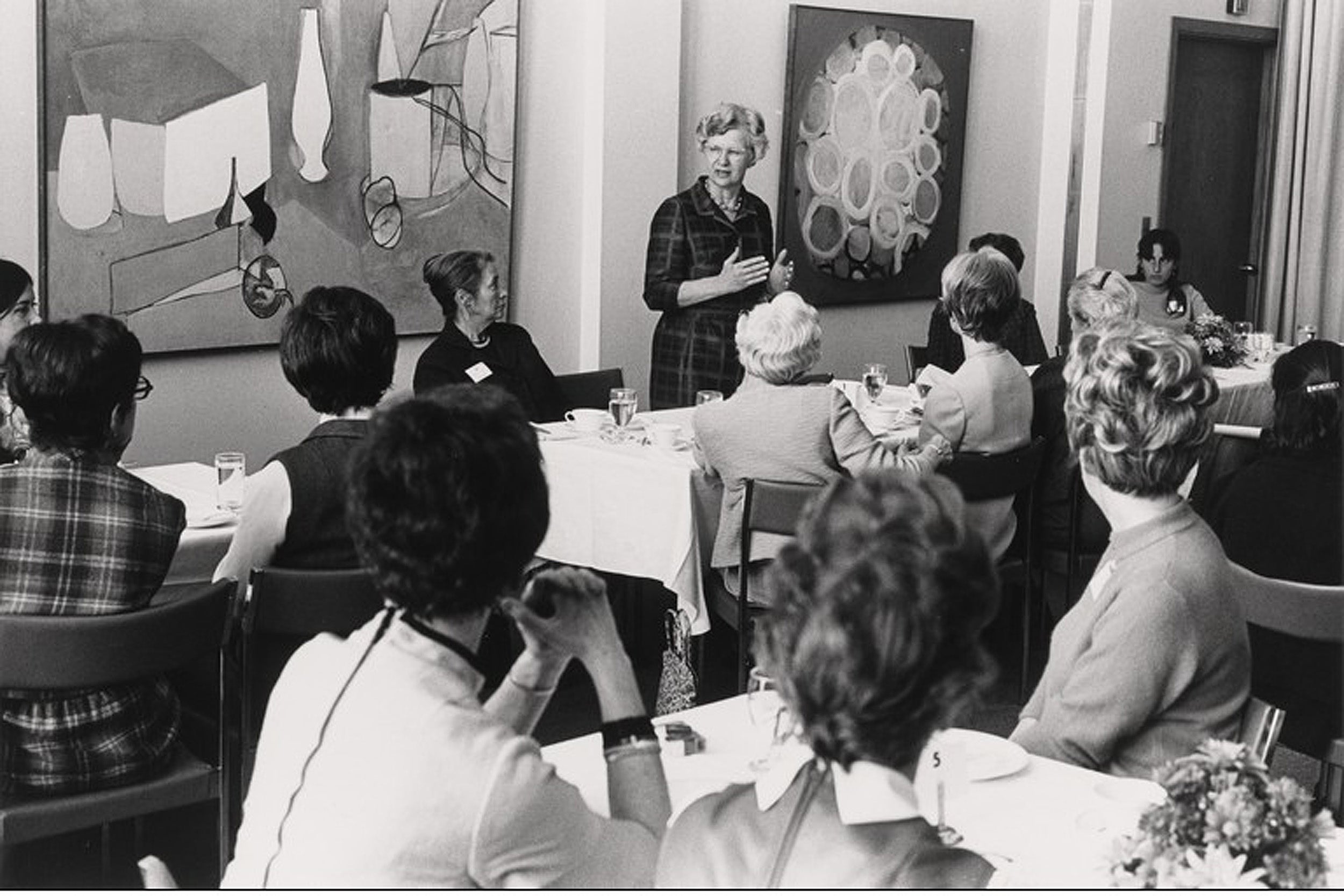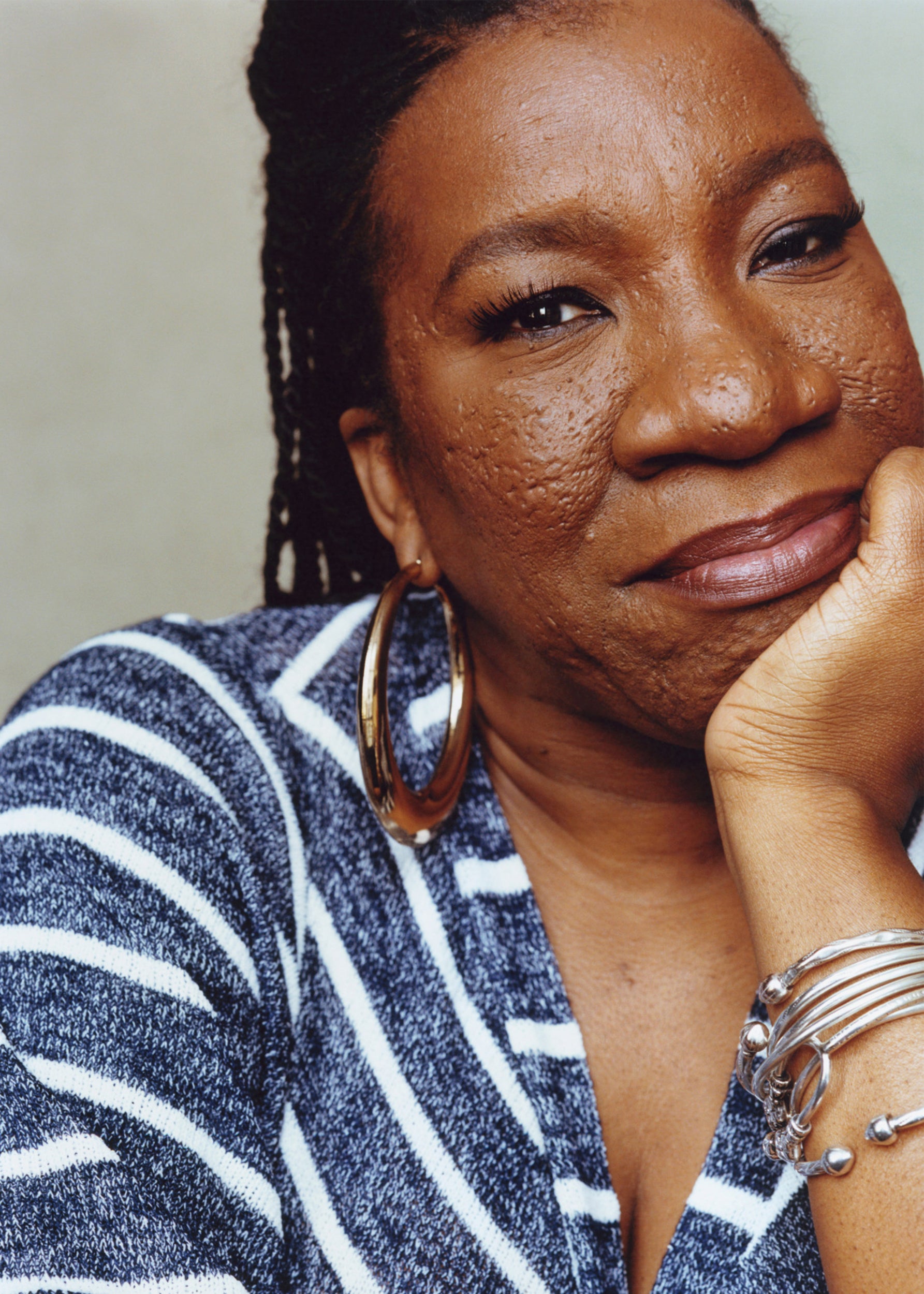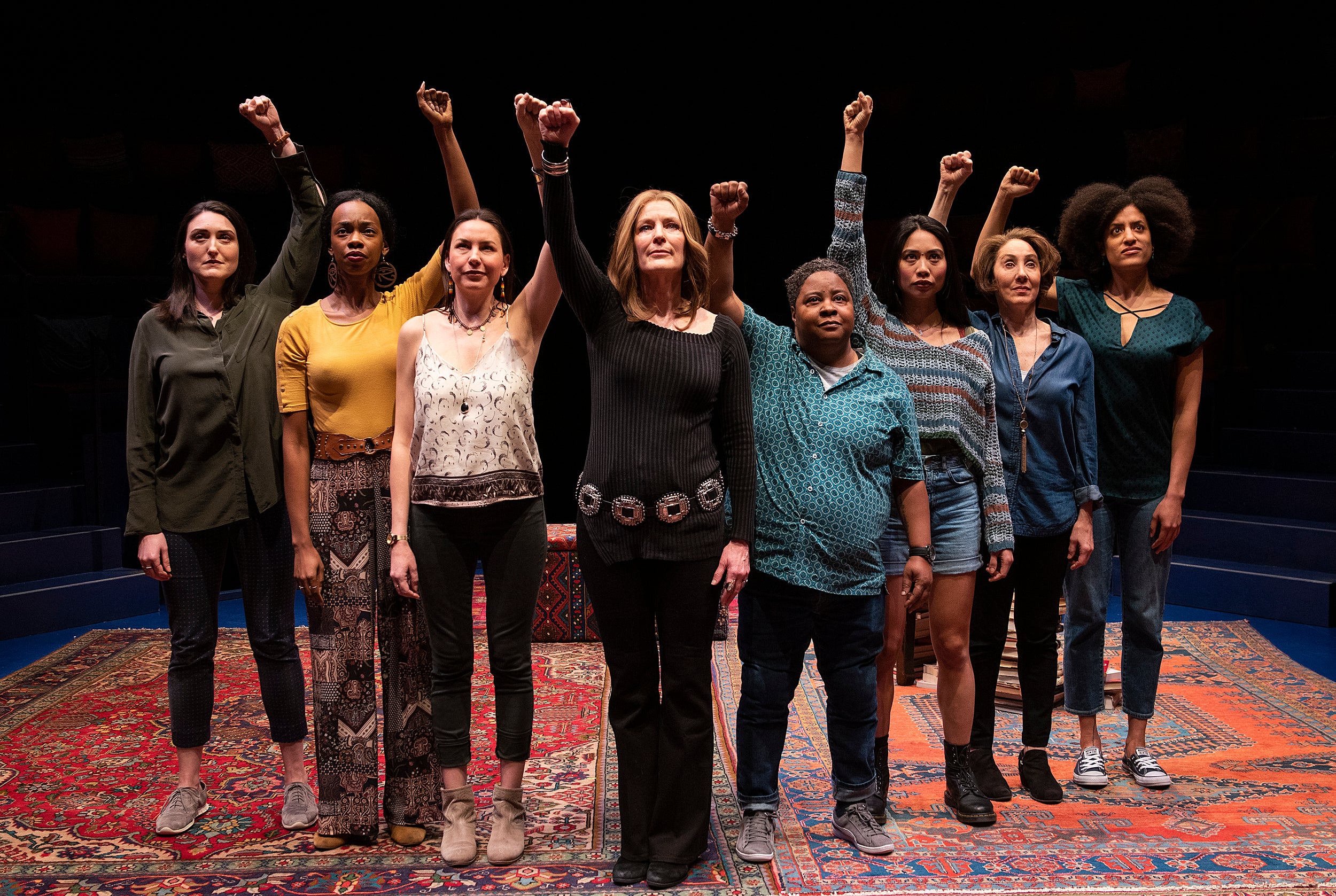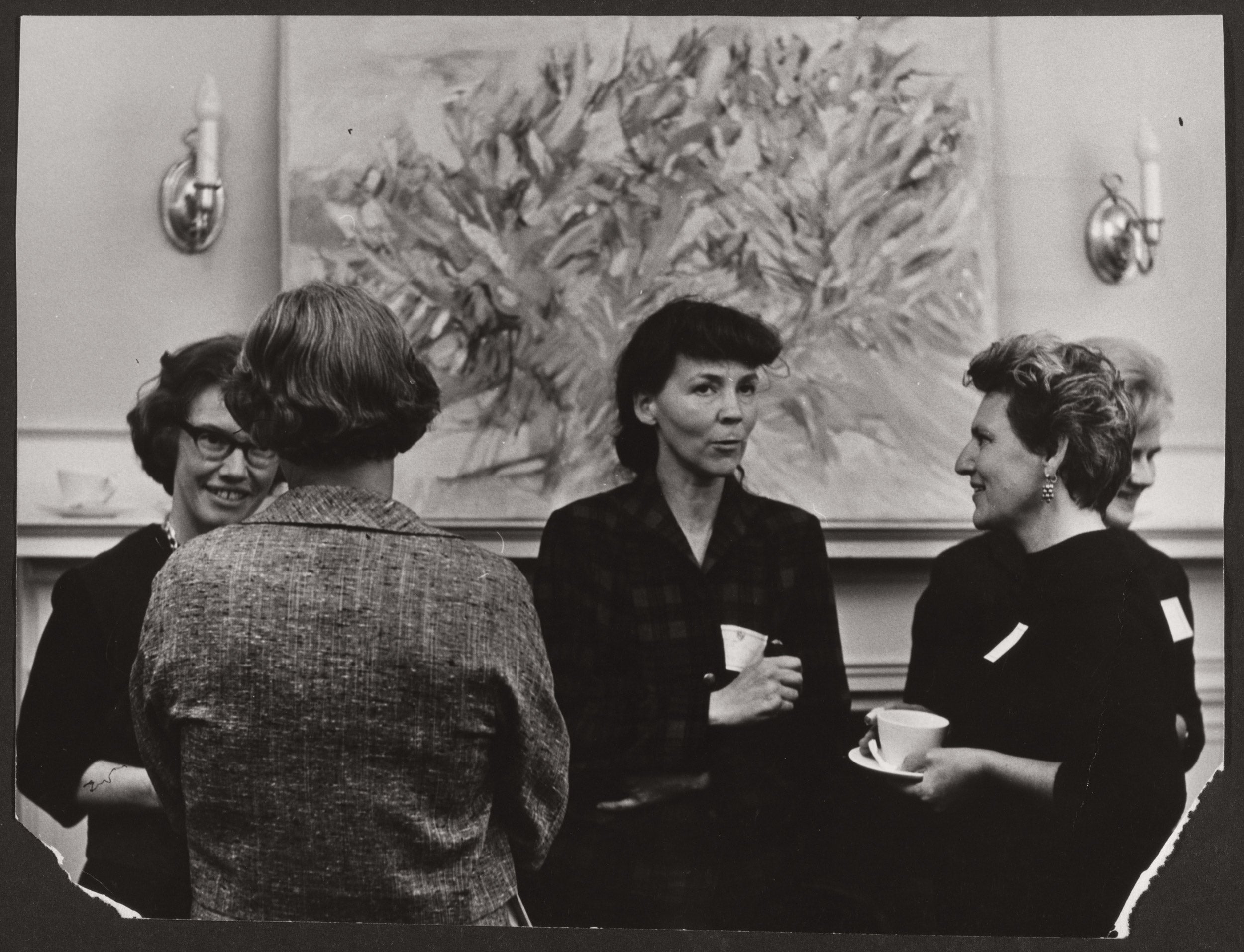
The Bunting fellows in conversation. Tillie Olsen is fourth from left.
Photo by Olive Pierce
A room of one’s own
‘The Equivalents’ follows Anne Sexton, Maxine Kumin, Tillie Olsen, Barbara Swan, and Marianna Pineda through the birth of Radcliffe Institute and the modern women’s movement
The following is excerpted from the book “The Equivalents: A Story of Art, Female Friendship, and Liberation in the 1960s” by Maggie Doherty, Ph.D. ’15. She’ll discuss her book online on Tuesday, July 14, at 4 p.m. You can register here.
The poet Anne Sexton spent the summer of 1962 swimming. Months away from publishing her second book and poised on the edge of fame, she soothed her nerves with water. When the weather was warm enough for a dip, she would step out of her house, strip nude, and slide into the pool in her backyard. She delighted in the warmth of the sun, the smooth feel of the water, the quiet of the morning. She could see an old train track from her backyard, while just out of sight, beyond the old, rolling hills of a golf course, the Charles River flowed through Newton Lower Falls, wending its way to the harbor in Boston.
Sexton’s young daughters, Joy and Linda, didn’t like when their mom skinny-dipped. But the kids were often absent that summer, off with a babysitter or with Sexton’s mother-in-law, who frequently helped with child care. Sexton needed the time to work. Though she’d only started writing poetry seriously five and a half years earlier, on a whim, her first collection had been a critical success. Fellow poets respected her; some of them expected great things. Sexton was a natural performer: an elegant woman with long legs and slim hips.
She captivated audiences at her readings. But she was also a labile, anxious woman, and she frequently needed time off from mothering simply to relax. On these summer mornings, she would swim calmly from one end of her pool to the other, traversing its 25-foot length.
Poetry usually followed her ritual sun worship. She would experiment with new poems, tinker with old ones. One of her major projects that summer was reviewing the galleys for her next collection. The book, her second, was to be published by Houghton Mifflin in October; the esteemed poet Robert Lowell, her friend and former teacher, had agreed to let her quote some of his words of praise. If she were so inclined, she could drive into Harvard Square and review the galleys in a gabled house where she and 23 other women created, studied, and worked, each with her own small office. But most days, Sexton found it more comfortable to work at home — especially now that she could, to her husband’s relief, work somewhere other than the dining room table.
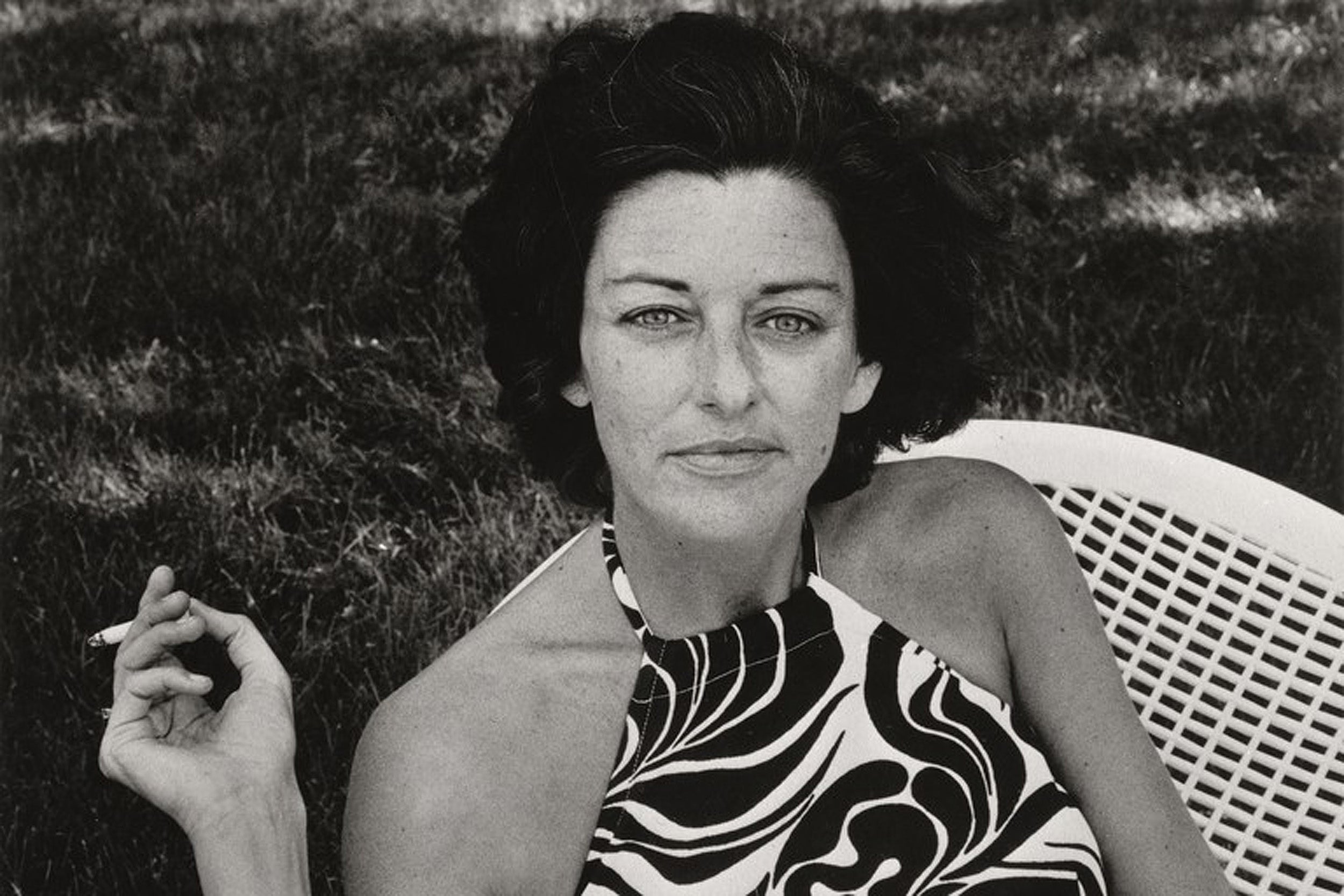
Portrait of Anne Sexton.
Photo by Nancy Crampton
Her home study had been built the previous summer. She described it to a friend as a “wooden tower” standing where the porch had once been. It had one long window that faced the backyard. Looking out, Sexton could see the pine trees and the blue hills from her desk, but when she was writing she faced away from the window — “nature … becomes my enemy,” she explained. While working, she sat either in her straight desk chair or, more often, in a soft red chair with her feet perched on one of her many bookcases. She could spend hours sitting in this position, drawing inspiration from the great writers on the shelves, many of whom she’d encountered only recently — Kafka, Rilke, Dostoevsky — and many of whom she’d come to love. “I hoard books,” she once confessed to a friend. “They are people who do not leave.”
There was another advantage to working from home. Sexton lived just a few minutes’ drive from her best friend, the poet Maxine Kumin. Tall, lean, and dark-haired, Kumin could seem at first to be Sexton’s twin, until one noticed her athletic build, her slightly hooded eyes, the sharp angles of her face. She, too, was a suburban mother and the author of a published book of poetry. She was also Sexton’s main source of emotional and creative support.
In the early 1960s, the poets’ lives were enmeshed: They spoke on the phone every day, sometimes about writing, sometimes simply about their lives. They watched each other’s children. They served cocktails to each other’s husbands. After Sexton installed her pool, the friends developed a happy routine that blended work and play.
Kumin brought her children over to swim, and she and Sexton sat by the edge of the pool with typewriters in their laps, their legs dangling in the water, and worked together on a children’s book, a nice break from their adult compositions. Though Sexton often feared social gatherings, Kumin’s dependable, comfortable company was almost always welcome.
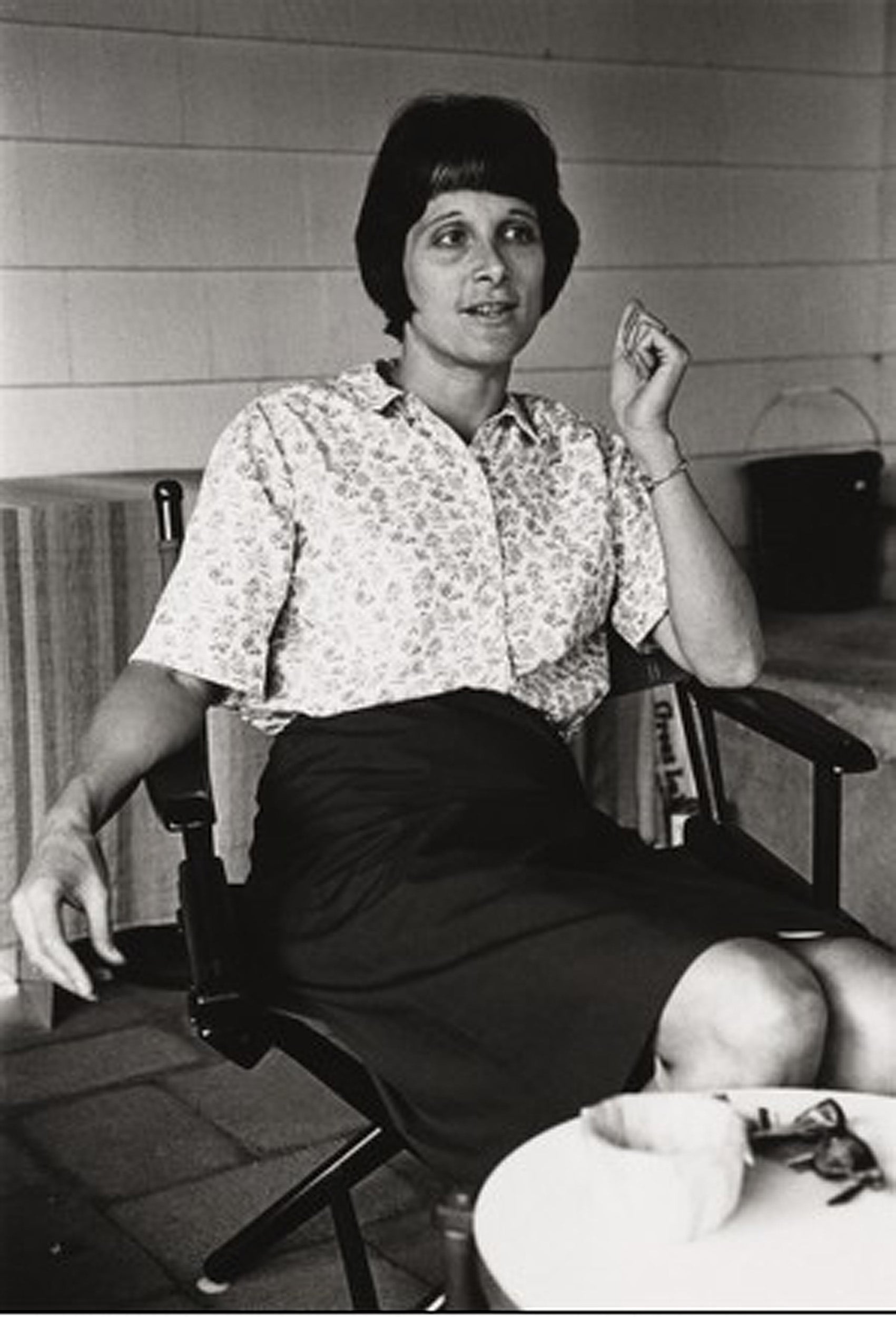
But in the mornings Kumin was usually still at her own home, caring for her own children. Sexton was left to appreciate her solitude.
On these summer mornings, no one needed her — not her husband, not her children, not her mother-in-law, not even her friend. The day was beautifully, blissfully hers.
Everything about these summer days — the pool, the study, the solitude, the second book, the second place to write, even the companionship of Kumin — was the product of a novel experiment in women’s higher education. In the fall of 1960, the prestigious women’s college Radcliffe, the sister school of Harvard, had announced an unprecedented fellowship program, one that targeted a ubiquitous and yet marginalized class of Americans: mothers. In the words of its founder, Radcliffe President Mary Ingraham Bunting, the Radcliffe Institute for Independent Study was designed to combat the “climate of unexpectation” facing women in mid-century America. As Bunting, a microbiologist, saw it, too many accomplished female undergraduates were giving up their dreams of becoming scholars or artists because they couldn’t see how they could do research or write a book while also managing a family and keeping house. The new program proposed to get these “intellectually displaced women” back on track.
Each woman admitted to the Institute as an “associate scholar” received a stipend of up to $3,000 (nearly $25,000 today) to spend as she pleased. She also received access to Harvard’s library resources and a private office — the proverbial “room of one’s own” — in a little yellow house at 78 Mount Auburn St., just a few blocks from Harvard Yard. A mother of four children, Bunting believed that most women wanted to find a way to combine professional interests and family life: Her own happiest years had been those she spent raising her children on a small farm in Connecticut while commuting twice a week to do research in a lab at Yale. As a university administrator and education reformer, Bunting recognized the role that institutions played in supporting women’s professional ambitions. She realized that you couldn’t simply tell women to work hard and keep studying if the world didn’t give them the tools and resources to do so.
The Institute’s founding had been announced on Nov. 19, 1960. A New York Times article broadcast the news to the nation: “Radcliffe Pioneers in Plan for Gifted Women’s Study.” Almost immediately, the phone in Bunting’s office rang nonstop. Within 10 days, Bunting’s secretary had been inundated with over 160 letters of congratulation and inquiry. Once the application process was formalized, the Institute received nearly 200 applications from women all across the country; other women interested in applying had been turned away because they didn’t have the requisite qualifications. And in September 1961, the Institute offered an inaugural group of 24 remarkable women — including Sexton and Kumin — the resources they needed to succeed, including membership in a professional and creative female community, the likes of which had never been seen before in the country’s history.
Imagine being a “gifted woman,” like the women accepted to the Institute, at the dawn of the 1960s. Perhaps you had graduated from one of the “Seven Sisters” colleges, maybe taken what people called a “little job” in New York after school. Maybe you even worked for the Allied war effort while your husband served overseas. Not long after the bombs fell on Japan, though, your job prospects dried up. The GIs returned Stateside, and they wanted their jobs back, or they wanted spots in graduate school so they could get even better jobs. As the Soviets built missiles and nuclear destruction loomed, you were told that the best way you could serve your country was to build a happy home.
Now, by all accounts, you have the perfect life: You have the high-earning husband, the rosy-cheeked children, and the Buick in the driveway. But something isn’t right. Household tasks don’t seem to hold your attention. You snarl at your children instead of blanketing them with smiles. You fret about how little you resemble those glossy women in the magazines, the ones who clean counters and bake cakes and radiate delight. (Looking at those ads, a housewife and freelance writer named Betty Friedan “thought there was something wrong with me because I didn’t have an orgasm waxing the kitchen floor.”) Everything and everyone confirm that it’s just as you suspected: The problem is you. You’re oversexed; you’re undersexed; you’re overeducated; you’re unintelligent. You need to have your head shrunk; you need to take more sleeping pills. You ought to become a better cook — all those fancy new kitchen appliances! — and in the meantime be content and grateful for what you have. The cultural pressure of the 1950s was so intense that some women, in order to survive, killed off the parts of themselves that couldn’t conform.
Women like Sexton and Kumin didn’t want to amputate their passions. Neither did the writer Tillie Olsen, a communist organizer from San Francisco who planned to write the great proletarian novel; nor the painter Barbara Swan, a portraitist who grew up in Newton and studied at Boston’s finest art school; nor the sculptor Marianna Pineda, who was born in Evanston, Ill., and apprenticed at various ateliers in the United States and Europe before settling down in Brookline, Mass. Each of these five women won admission to the Institute during its first or second year. They gathered in Cambridge, where they met historians and psychologists, composers and scientists, poets and painters — all of whom were women.
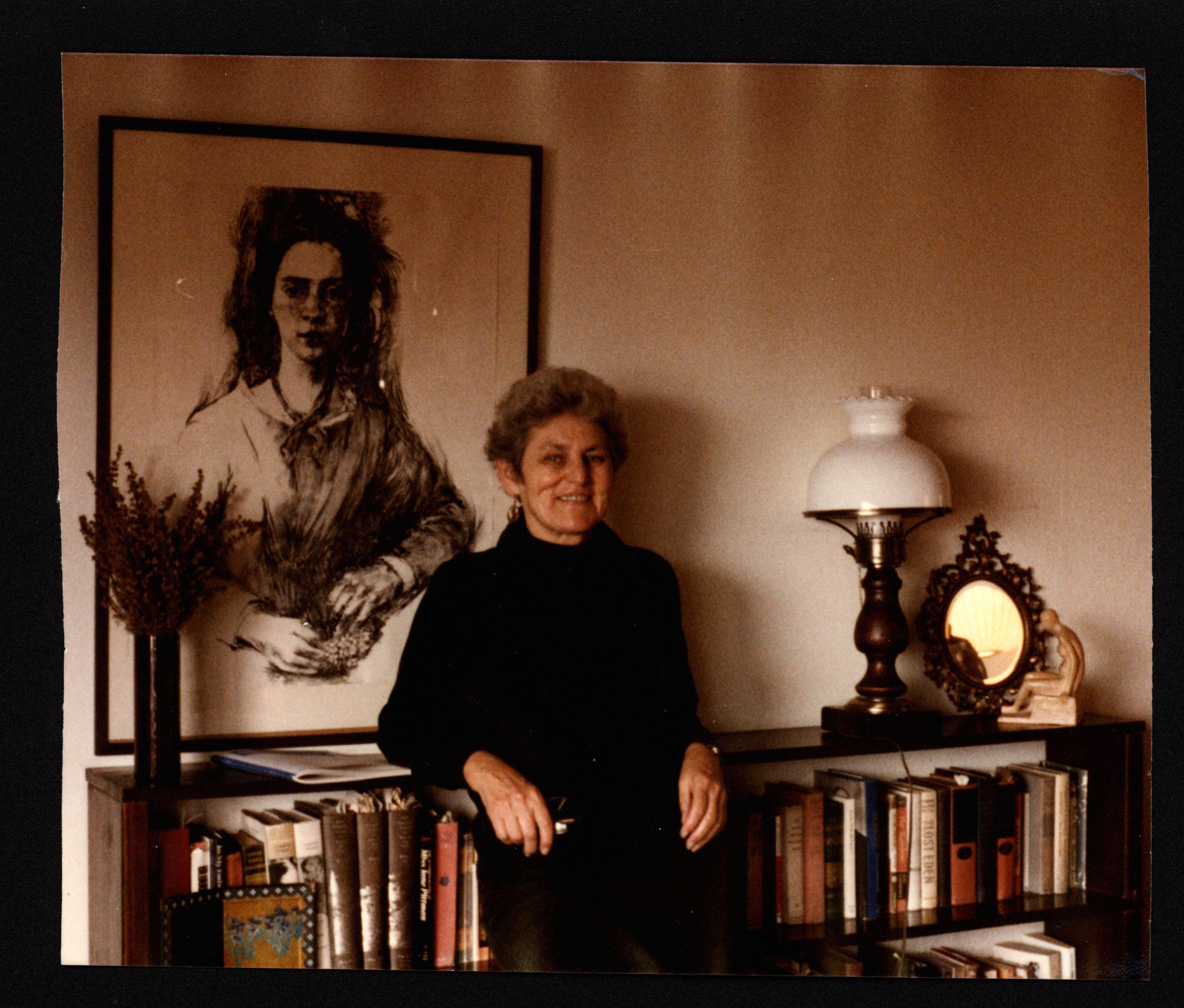
Tillie Olsen in front of Barbara Swan’s drawing of Emily Dickinson.
Courtesy of the Department of Special Collections, Stanford University Libraries
Many Institute fellows hadn’t experienced such female community since their days at Vassar or Sarah Lawrence. Others — including Sexton, who never earned a college degree — were experiencing this kind of camaraderie for the first time. At the Institute, a woman could forget about her housework and her children and simply be a mind among other minds — at least until the dinner hour. The founder of the Institute often called it a laboratory. It was also an incubator where new growth could take place.
The results of what Bunting called her “messy experiment” were not what she, or anyone, anticipated. For the women it supported, the Institute was nothing short of life changing. It offered each of the writers, artists, and academics a crucial mix of solitude and community, ideal conditions for growth. For the first time, these women found themselves in a community of the like-minded. They conversed about everything from their best publishers to their worst marital spats.
The Institute became a site for the development of influential feminist art and thought. The writers and artists there encouraged each other to represent female experience in all its difficulty and complexity. They broke taboos about what was a fit subject for lyric poetry; they etched their experience of womanhood into stone. Along with the other associate scholars, they discussed the feminist polemics of the day. (Friedan’s seminal “The Feminine Mystique,” a book that Bunting had helped Friedan develop, was published during the Institute’s second academic year.) They also advanced some of the first critiques of the ideology behind the nascent women’s movement. Was motherhood always a form of oppression? Did all women, regardless of race or class, suffer in the same way? Can a woman ever really have it all? At the Institute, with each other, they began to tease out some possible answers. With a few exceptions, the women at the Institute didn’t think of themselves as revolutionaries. Some of them didn’t even think of themselves as feminists. But their earnest efforts at self-expression enabled those who came after them to make bigger, bolder changes.
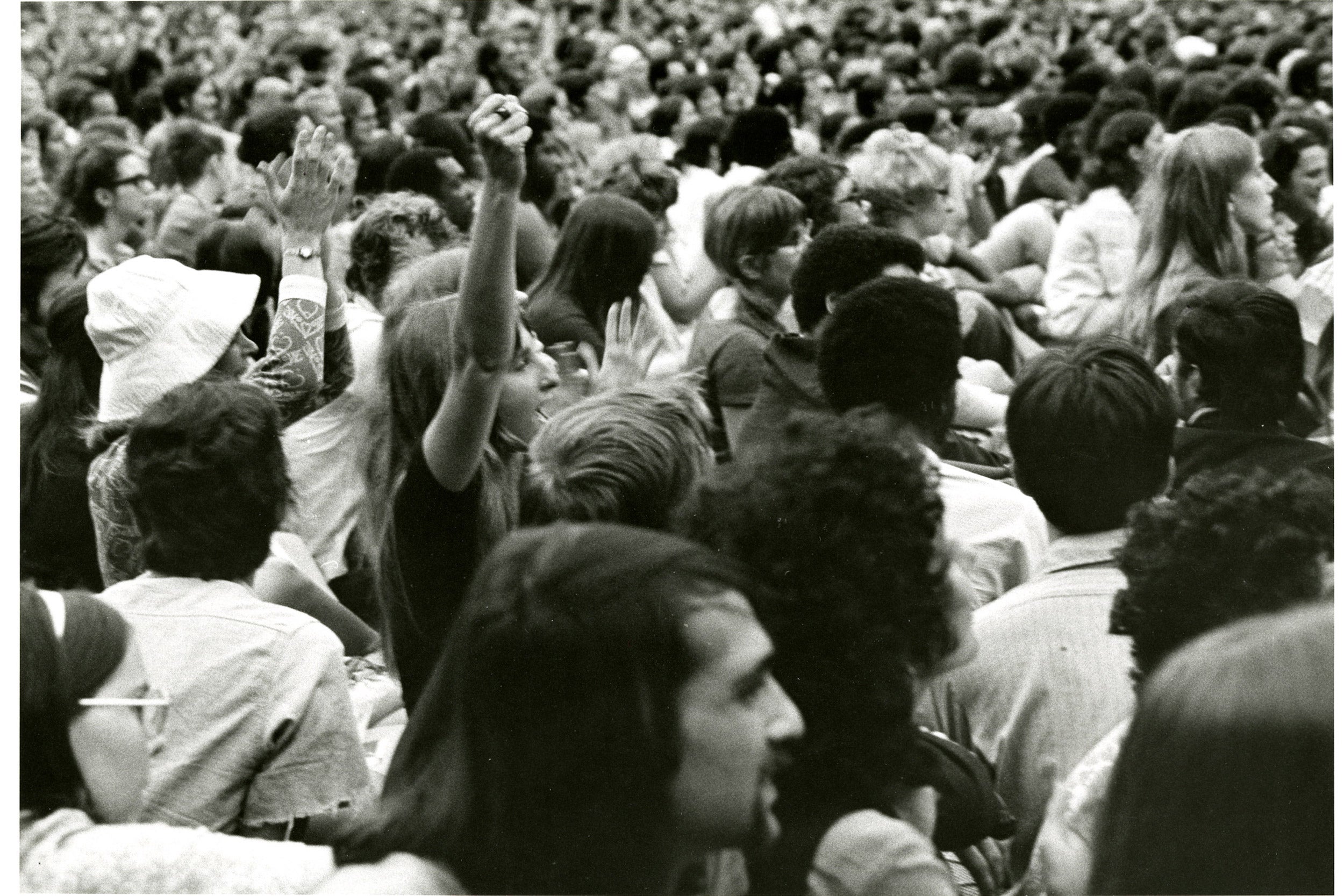
Women’s rights demonstration on Aug. 26, 1970, New York City.
Photo by Freda Leinwand
During their two years at the Institute, from the fall of 1961 through the spring of 1963, Sexton and Kumin met a number of “intellectually displaced” women who thrilled at this chance to jump-start their studies. They befriended historians, learned from psychologists, and listened to educational researchers. They became especially close with three other artists who attended the Institute during its first two years: Olsen, the writer; Swan, the painter; and Pineda, the sculptor. These five women formed a close, collaborative clique. Joking about the Institute’s application standards, which required that applicants have either a doctorate or “the equivalent” in creative achievement, they called their friend group “the Equivalents.”
The years at the Institute were a tipping point in each of these artists’ lives. For the unstable, prolific Sexton, these years were a once-in-a-lifetime blend of productivity and quietude in which she wrote her strongest collection of poetry. During her fellowship years, Kumin rekindled her scholarly interests and experimented with different genres; soon after her fellowship, she wrote the first of three novels and became a writer known for her prose as well as her poetry. Olsen made good on the literary promise she’d shown decades earlier: The research and writing she accomplished at Radcliffe propelled her to literary fame. For Swan and Pineda, two sociable people who usually worked in solitude, collaborating at the Institute drew them into community once again. Swan, who later referred to the Institute years as “a real turning point,” started collaborating with the poets (she later illustrated her friends’ books and designed their covers), while Pineda, inspired by the women she encountered, began an important sculpture series; one sculpture would end up in Radcliffe Yard. The Institute provided the Equivalents with a refuge, but then it pushed them back into the world, for better and for worse.
I discovered the Equivalents when I was in my late twenties. I was finishing up a doctoral degree in English, and I was contemplating my future. I was dating a man whose career took precedence over my own. A child of the “girl power” 1990s, I was committed to the idea that I could pursue my intellectual interests and devote myself to a career while also having a happy family. I could and would do it all! Still, I couldn’t shake the sense that I was going to have to choose between my professional dreams and being a mother. My own mother had struggled to balance career and family even with a supportive spouse.
“The cultural pressure of the 1950s was so intense that some women, in order to survive, killed off the parts of themselves that couldn’t conform.”
Alone in Radcliffe’s library, on the same grounds the Equivalents once walked, I opened manila file folders and sifted through old papers. I read about women who couldn’t find adequate child care. I read about women who feared social opprobrium for leaving their children alone while they, selfishly, went off to work and to learn. I read about jealous husbands, condescending male teachers, books sacrificed at the altar of domestic tranquility. I took very good notes.
The years passed. I left my boyfriend; I finished my degree. I kept reading: notebooks, letters, manuscripts, recipe books, bills. I read about child-care challenges, maternal guilt, debts unpaid, dreams unrealized. I read, too, about the ways these five women offered each other understanding, support, and recognition. And I read letters in which the writer, pressed to her limit, responded to a friend with jealousy or with rage. I knew what it felt like to be hopeful and what it felt like to rage.
The gender revolution that began decades ago remains unfinished. So much has changed since the days the Equivalents walked through Radcliffe Yard: Title IX is on the books; female CEOs are on the Fortune 500 list; books by women receive praise in the pages of national magazines. But study after study reports that within heterosexual couples women still do more of the housework. As of 2018, women made just over 80 cents on the dollar compared with men. There is still no widely available state-supported child care. The story of the Equivalents is, in part, one of how they changed the world but also one of how much remains to be done.
Copyright © 2020 by Maggie Doherty. Excerpted by permission of Alfred A. Knopf, a division of Penguin Random House LLC. All rights reserved. No part of this excerpt may be reproduced or reprinted without permission in writing from the publisher.



